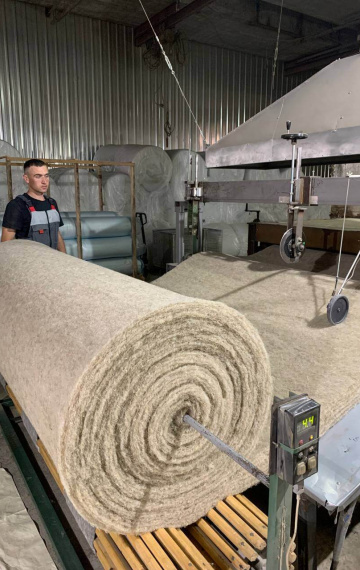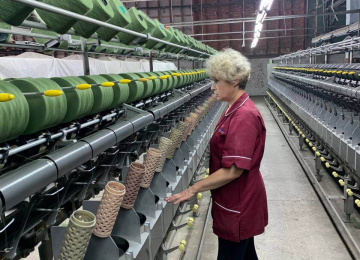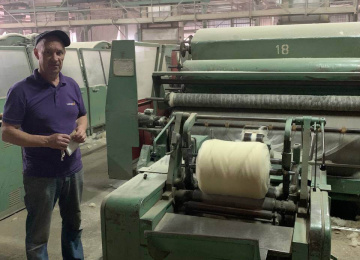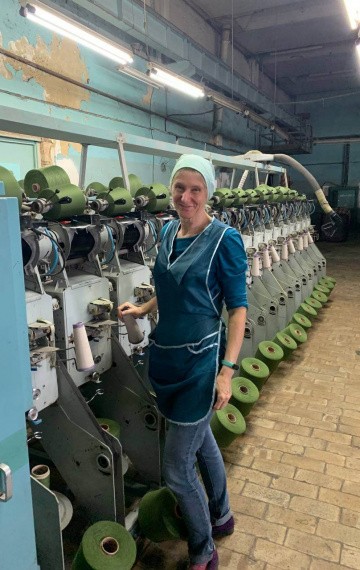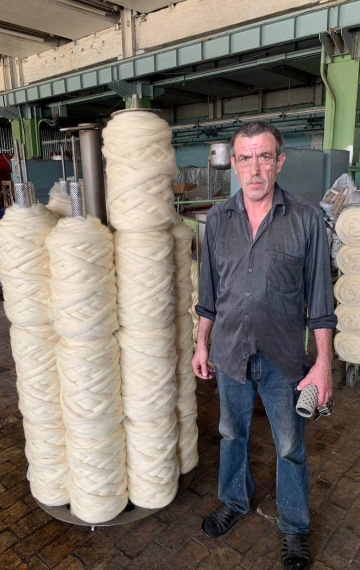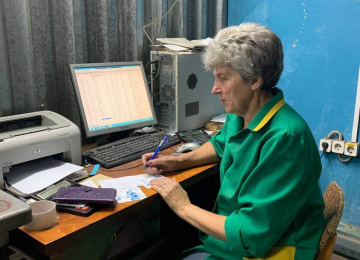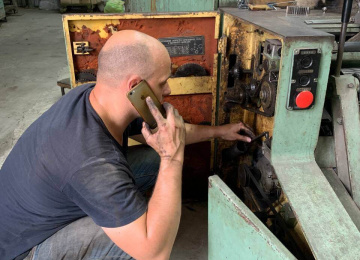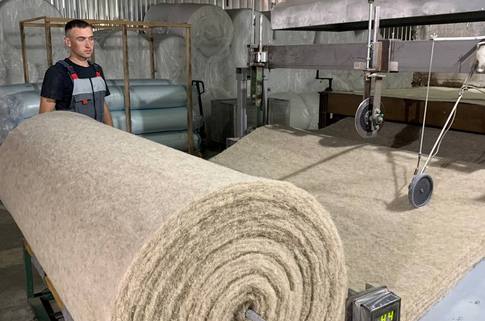
Sumykamvol, a textile business in Ukraine’s north-central Sumy Oblast, was the last industrial factory to be set up in Soviet Ukraine. Starting production in 1987, it was one of the largest textile plants in the Soviet Union, producing part-wool yarn. In its early years, the factory employed 3,000 people, and supplied its yarn not only to clothes factories around the Soviet Union, but to customers abroad as well.
But crisis soon came to the plant with the collapse of the Soviet Union in 1991 and the ensuing economic upheaval: Sumykamvol went through privatization, bankruptcy and several changes in ownership.
The revival of the plant came only in 2001, when it was purchased by a group of entrepreneurs who wanted to develop Ukrainian wool yarn production. Serhiy Pavlov, the present head of the plant, says at that time the plant’s production facilities had to be completely renewed, with the old Soviet equipment being replaced in order to expand production and seek new sales markets.
“The equipment was outdated – not so much physically, it was just obsolete,” says Pavlov.
“It was impossible for us to achieve either normal product quality, or a low enough prime cost. So the factory had to be modernized. This was partly achieved through investments and loans. But only partly, because credit resources were so expensive, and it was almost impossible to attract foreign investment into light industry, which was being hit by uncontrolled imports.”
But the 35-year-old Sumykamvol has survived, revived the Ukrainian wool-making business and now exports its products to over 30 countries worldwide.
How was it done?
From factory to industrial park
For a start, the plant’s large territory of more than nine hectares was not fully utilized, so it was decided to put the spare space to better use. Plant management decided to turn the unused areas into an industrial park – the first in Ukraine – which they named “Patriot” and opened in 2005.
The concept is simple: businessmen can rent both production facilities with equipment as well as offices, or just the space. Old premises were transformed into modern workshops and offices. The implementation of the industrial park project, says Pavlov, helped not only to keep his business in the manufacturing sector, but also helped it adapt to the modern market environment.
“We lease out the plant area to completely different companies,” Pavlov explains. “How big they are or what they do isn’t important – these aren’t just textile firms, and in total we’ve got over 130 companies working on our territory.”
The textile factory itself was gradually transformed into a group of companies engaged in various types of production. One processes sheep's wool and the combed wool to make yarn, another produces fillings for blankets, pillows and mattress covers, while another make textiles from flax, and wool for felting. In total, the Sumykamvol group of companies now employs about a hundred people, and its products are exported to a dozen European countries, as well as the United States, Canada, China and India.
“We’re the only ones in Ukraine to produce felting wool,” Pavlov says. “It is used not only to manufacture valenki (traditional felt winter boots), but also all kinds of accessories, women's handbags, and children's toys. We also export it to Europe, the United States and Canada.”
Reviving hemp production
Recently the factory started producing textiles made from hemp fibre. Such fabrics were widely used in Ukraine in antiquity, with Ukrainians using hemp to make not only clothes, but also bed linen and home textiles. Hemp fabric has antibacterial and antifungal properties, and is not allergenic. Furthermore, hemp fabric clothes heat while still allowing the body to breathe.
Tatyana Moiseenko is the head of the company in the Sumykamvol group that specializes in the production of hemp products. It is still quite difficult and expensive to work with hemp as a raw material to manufacture textiles, as special and modern equipment is required, she says. But Ukraine is uniquely primed to succeed in this branch of the textile industry because of its favourable growing conditions and traditions in using this natural material.
“We’re trying to renew the culture of using non-narcotic hemp varieties that were specially bred forty years ago,” Moiseenko says.
“Hemp fibre is a durable natural material, absolutely eco-friendly, grows without herbicides and pesticides, is resistant to pests, and has natural antiseptic properties.”
Hemp can not only be used as a filler for pillows, blankets, toys or upholstered furniture, but also for producing yarn and fabric, medical cotton, building materials, and much more. But for that, special equipment and technologies are required. To acquire them, the company decided to take part in the Stand for Ukrainian Business programme.
This initiative is implemented under the “EU4Business: competitiveness and internationalization of SMEs” programme, which is co-financed by the European Union and the German government. The programme is itself implemented by the German federal company Deutsche Gesellschaft für Internationale Zusammenarbeit (GIZ) GmbH.
As part of the initiative, Sumykamvol was provided with a business consultant to assess the enterprise’s business model and help determine directions for development. The consultant is now studying the internal mechanisms and specific aspects of the business, and preparing recommendations to optimize certain processes in order to attract investors. They are also going to apply for grants from the European Union to purchase new equipment.
They also plan to attract foreign investments, but at the moment this is almost impossible because of the war in Ukraine. Sumy borders Russia, so the situation in the region is very tense. The enterprise is operating at only a quarter of its capacity, and most of its employees have left.
But despite this, Sumykamvol’s management are not halting their efforts to modernize and develop the factory – they understand that these efforts must continue to preserve jobs and produce quality products that are in demand globally.
“Only about 15 employees are at work now; the others left the city because of the war,” says Moiseenko.
“A Russian missile hit near one of the factory buildings. The windows blown knocked out. But in spite of everything, we’re continuing to work partially, and fulfil orders. We really want to keep our enterprise, and jobs for our people, as well as the ability to produce really high-quality Ukrainian textiles.”

